
© Rosalie O’Connor. (Click image for larger version)
American Ballet Theatre
Souvenir d’un Lieu Cher, I Feel the Earth Move, Daphnis and Chloe
★★★✰✰
New York, David H. Koch Theater
25 October 2017
www.abt.org
davidhkochtheater.com
E Pur Si Muove
The choreographer and L.A. Dance Project director Benjamin Millepied is a mover and a shaker, a clever curator, a man of taste, a force in the dance world. But is he good choreographer? The jury is still out. There is a pattern: Each new project comes with a wave of excitement and publicity. What a cool idea! What impressive collaborators! Then the curtain opens to reveal something smart, well constructed, stylish, but thin.
Mikhail Baryshnikov, over a decade ago now, once said to a reporter that Millepied is not a natural choreographer, by which I think he meant that he has everything going for him except real choreographic imagination. It may be the wisest thing anyone has said about Millepied. Last night, American Ballet Theatre unveiled his newest work for the company, I Feel the Earth Move. Everything about it was self-consciously edgy, at least for the ABT set. The ballet began with the curtain already open and the lights on in the house. The theater drapes had been removed, so the audience could see right into the wings. The dancers, some with faces covered by bandannas, stomped on in an almost military formation. The costumes were unisex shorts and tanks, by the fashion house Rag & Bone. The score – a selection of excerpts from Philip Glass’s Einstein on the Beach – began with Lucinda Childs’s recorded voice saying the words “I feel the earth move.” Chic and smart, but hardly uncharted territory.

© Rosalie O’Connor. (Click image for larger version)
What followed was a series of loose, free-form duets and ensembles, with a push-and pull quality. Dancers fell to the ground, stretched, retreated, folded one arm over the other arm, squatted, walked casually from here to there. A troop of women in shorts came and went. They formed lines with their bodies on the floor, created waves with their arms in the air. Chains and lattice patterns emerged and dissolved. Everyone looked relaxed, straightforward, un-prettified. The various elements brought to mind William Forsythe, Twyla Tharp, an assortment of seventies Minimalists. But what was lacking was the invention, the imagination to bring all these stylistic elements to life. The one passage that stood out was a solo for Herman Cornejo, full of turning jumps and spins and feints, but that’s because Cornejo is such an astonishing dancer – strong and fast and dashing and slippery – that one can’t help but get excited. One can never get enough Cornejo.
The evening had begun with Alexei Ratmansky’s quartet Souvenir d’un Lieu Cher, which I’ve reviewed before. The only thing that has changed is that Tyler Maloney, one of the most interesting up-and-coming dancers in the company, has enriched the work with his very particular quality of limpid sincerity. When he looks into his partner’s (Sarah Lane’s) eyes or takes her hand, you believe him.
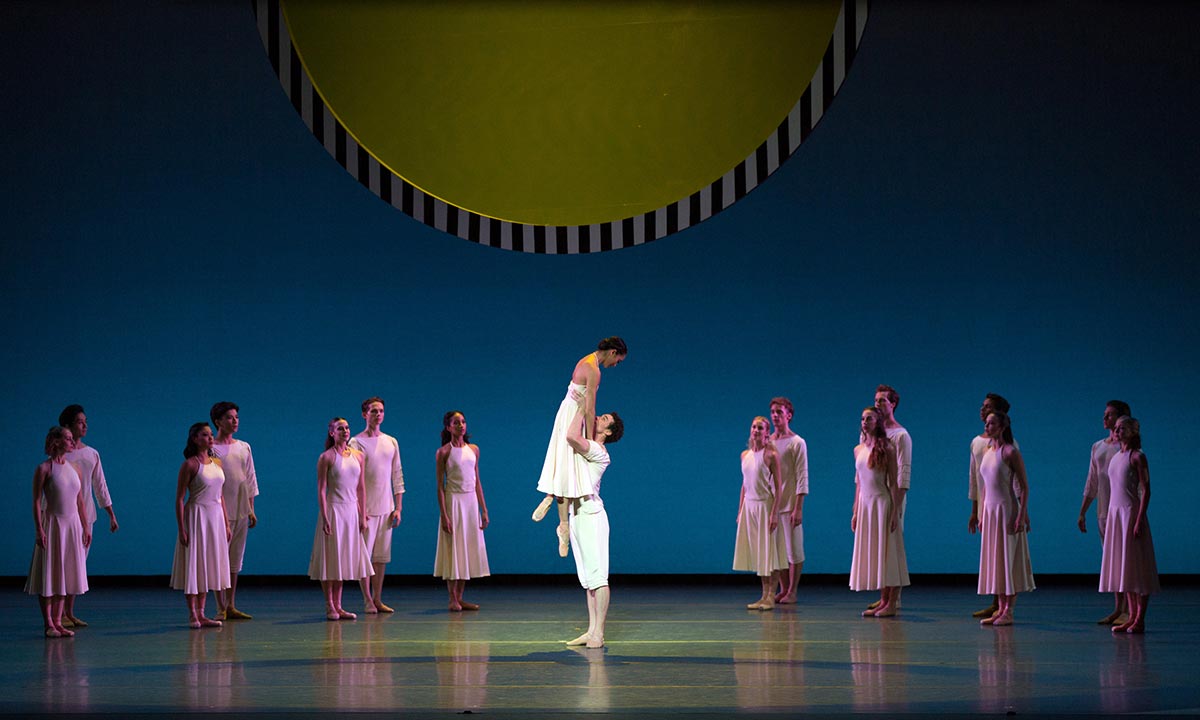
© Rosalie O’Connor. (Click image for larger version)
There was another work by Millepied on the program, Daphnis and Chloe. Though on the surface it is nothing like I Feel the Earth Move, it shares many of the same problems. The piece, originally made for the Paris Opéra Ballet (in 2014), premiered here last year. It has a wondrous score, by Ravel. It’s hard not to lose oneself in the great, swooping smears of sound, the haunting choral melodies. I particularly love a passage that gives a perfect aural impression of the sunrise, filled with various bird calls. The designs, by the French artist Daniel Buren, are attractive. The women wear pretty sundresses in white, red, green, blue! The men are in shorts. They all look like they’re enjoying a vacation on the island of Mykonos. Brightly colored, translucent squares, circles, and triangles, dangle above the stage. But Millepied barely manages to tell the story of Daphnis and Chloe. The characters aren’t differentiated enough, with the exception of Cornejo – yes, him again – in the role of a brutish bad guy. But mostly, we’re left with a lot of to-ing and froing – very beautifully executed by Stella Abrera and Cory Stearns and the rest of the cast – and an incomprehensible dénouement. One moment the heroine is being pummeled by a gang, the next she’s safely in her lover’s arms once again. And it feels long.

© Erin Baiano. (Click image for larger version)
The most successful Millepied of the evening was a little amuse-gueule at intermission, Counterpoint for Philip Johnson, which played out on the balconies of the grand promenade. To Steve Reich’s Nagoya Marimba, students from the school and young dancers from the studio company flooded the terraces above the promenade, executing simple, repetitive, rhythmic movements. It was lovely, and exactly the sort of thing Millepied is good at: stylish events that feel fresh and youthful and make intelligent use the urban spaces that surround us.












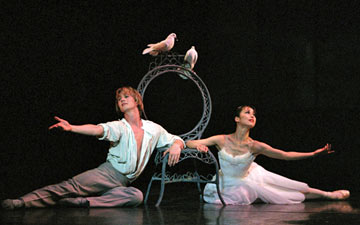
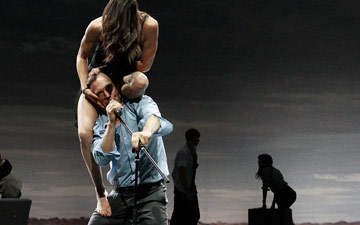
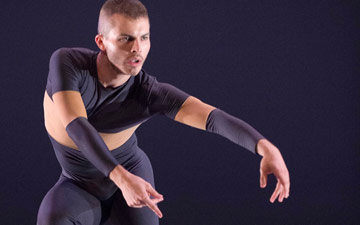
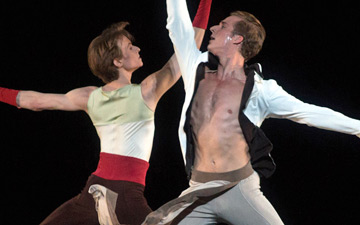

You must be logged in to post a comment.